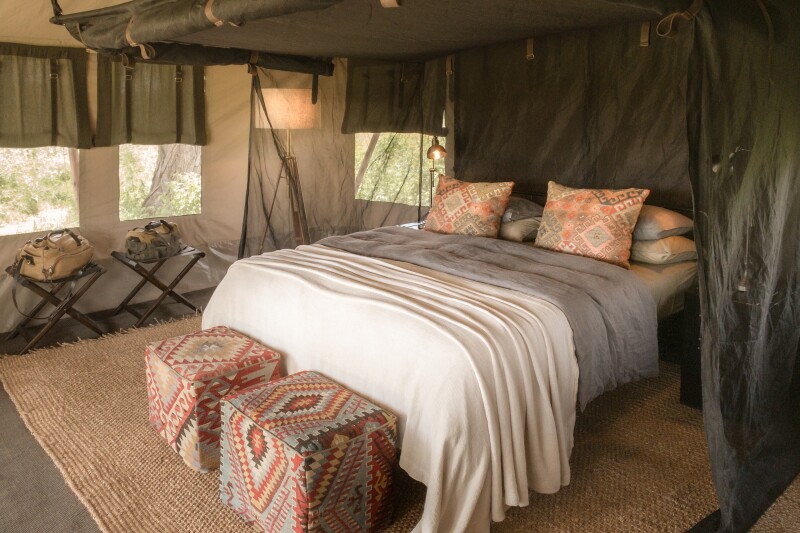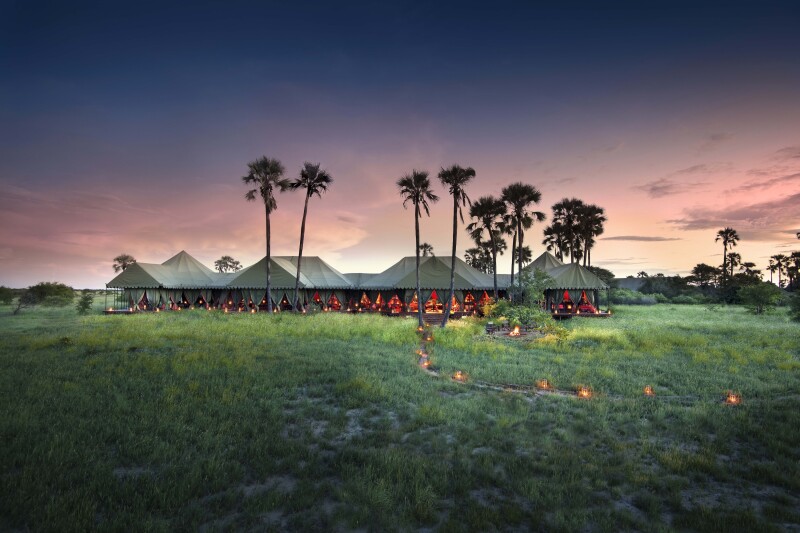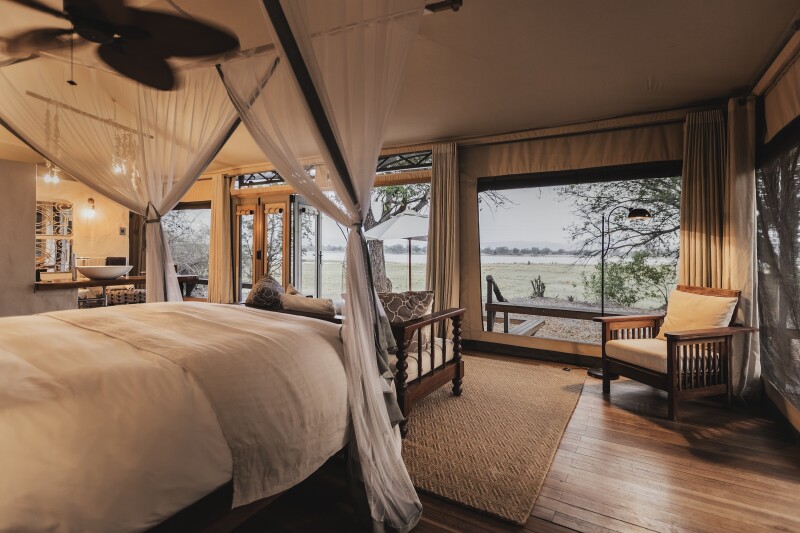Viral images of traffic jams in the Serengeti offer the impression that there are too many tourists in Africa’s wild places. But looks can be deceiving. The issue isn’t the number of overall visitors: It’s the fact that too many people go on safari to the same places at the same time, whether that’s Botswana’s Okavango Delta during its flood or during East Africa’s seasonal Great Migration of wildebeest, which cross the Mara River at the risk of becoming a crocodile’s lunch.
Seasoned safarigoers know traveling outside of peak times yields far fewer crowds but equally compelling wildlife experiences. While you’ll need to watch the weather, traveling off-peak also translates into lower nightly rates and better availability at top camps and lodges.
We’ve put together a region-by-region guide to off-peak safaris in sub-Saharan Africa’s most popular destinations. With a little careful planning, you can experience these wild spaces while often having them practically all to yourself.
Kenya and Tanzania

A bedroom at Nyasi Tented Camp in Tanzania’s Serengeti
Courtesy of Nyasi Tented Camp
July to October is peak season in the northern Serengeti and the Maasai Mara. During this period, the rains draw the Great Migration, millions of wildebeest along with zebra and Thomson’s gazelles roaming in search of fresh grazing. While herd crossings through the crocodile-rich Mara River are dramatic, travelers pay much higher prices and are likely to run into hordes of vehicles vying for the best vantage points along the river.
When to travel off-peak
The migration is cyclical, and the herds generally follow the rains clockwise through Tanzania’s Serengeti National Park and Kenya’s Maasai Mara National Reserve. In November, the herds leave and so do the tourists. Until June, visitors will have quieter viewings of the northern Serengeti’s glorious landscapes and abundant wildlife, including coppery topi, defassa waterbuck, and smaller herds of resident wildebeest. But try to avoid April and May, when the long rains make game drives more difficult.
“The migratory bird movement is also a major highlight during the low season,” says Gina Ferguson of safari travel specialist Roar Africa. “Many species of birds migrate to East Africa during this time, including the endangered lesser flamingo.”
Also expect to pay considerably less by avoiding the peak of the migration. “During the green season, prices drop significantly,” notes Hagai Zvulun, founder of Tanzania’s Entara Lodges & Camps. “You can save between 20 and 40 percent on overall safari costs by booking outside the peak season.”
Or head south. While you won’t see the famous Mara River crossings, discovering the migration as it moves into southern Tanzania from December to January is a remarkable experience. From February to March, the calving season begins, with the abundance of young antelope drawing numerous predators. Calving soon gives way to rutting, which sparks plenty of mating battles between males competing for females.
The heart of the action is on the Ndutu Plains, where Legendary Expeditions runs the charming Nyasi Tented Camp, nine suites under canvas with double beds, private loungers, and en-suite bathrooms. At Nyasi, exclusive-use vehicles come standard, allowing you to set the pace of your safari. Remember that temperatures in February and March can be hot (84°F and above during the day), with a higher likelihood of rain as you head toward March/April.
Botswana

Jack’s Camp is an iconic retreat in Botswana’s Makgadikgadi Pans.
Courtesy of Natural Selection
June through September is Botswana’s busiest season for tourists. During this time, the Okavango Delta is in the middle of its seasonal flooding, bringing abundant wildlife with it, while the dry days of winter drive wildlife to the Chobe River up north. Although there isn’t a great migration event to concentrate crowds into specific areas of the delta, prices spike and availability dries up.
When to travel off-peak
Peak season in the Okavango Delta is all about witnessing the floods, but by visiting the Okavango Delta from March to May, when the vegetation is still green from summer rains and the floods begin to trickle south from Angola, you can still enjoy excellent game viewing but with gentler prices. Head for camps near the delta’s northwestern panhandle, like Natural Selection’s North Island Okavango, a contemporary feeling four-suite camp, if you want to ensure water activities such as mokoro (canoe) trips down hippo channels and speedboat safaris.
Another benefit of traveling in the green season is that “the wildlife are all having their babies, so it’s a superb time to see the young ones being born,” says Daniella Ponter, founder of Vancouver-based Sikeleli Travel & Expeditions. And while game viewing takes a little extra work when the landscape is green, the rainy season from “September to March is the most spectacular time of year for birding in Botswana,” she says.
Visit the Makgadikgadi Pans—the iconic Jack’s Camp was fully rebuilt in 2021 in February and March to marvel at the annual zebra migration. It’s the longest mammal migration in Africa, with thousands of zebra arriving from Chobe and the Okavango Delta and plentiful predators in tow.
South Africa

Guests of andBeyond view a lion in South Africa’s Sabi Sand game reserve.
Courtesy of andBeyond
Peak season in South Africa is driven as much by the Northern Hemisphere summer holidays as it is by the climate. July to September is the high season in the Lowveld and in Kruger National Park, and it coincides with the dry months of winter. Less vegetation means easier game-viewing, and animals are drawn to the waterholes, occasionally delivering thrilling predator encounters.
When to travel off-peak
The Southern Hemisphere summer months (November to March) bring dramatic afternoon thunderstorms and short, sharp downpours that wash the dust from the air and turn the bushveld into a green canvas. They also spark the arrival of myriad migratory bird species. From November the trill of woodland kingfishers is the soundtrack to any safari in the Kruger National Park and adjoining private reserves.
The green season in South Africa has “plenty of exciting and possibly unexpected benefits,” adds Daryl Dell, an experienced private guide and travel specialist with andBeyond, which has just reopened Ngala Tented Camp after a major rebuild. “There is a much higher chance of seeing young animals like zebra foals, wildebeest calves, and impala lambs . . . [and the] gorgeous greens of summer provide guests a real understanding of what the bush looks like in full flourish. You can identify more of the tree and plant species. It really helps to show off the diversity of the Lowveld.”
Keep a close watch on the heat and humidity, as temperatures often spike above 100 degrees Fahrenheit. Opt for the early-morning game drives and find a shady pool lounger in the heat of the day.
Zimbabwe

A guest room at Wilderness Chikwenya Camp in Zimbabwe
Courtesy of Wilderness
The dry days of winter (June to September) are peak months in Zimbabwe (and much of Zambia), again coinciding with the Northern Hemisphere holidays. It’s also the best time to spot game because the vegetation is sparse and wildlife is drawn to the waterholes. If you want to see Hwange’s famous elephants, dry season is the best.
When to travel off-peak
In Mana Pools National Park, where people go for magnificent wildlife sightings framed by the wide Zambezi River, the shoulder season in September and October brings warmer days, the chance of dramatic afternoon thunderstorms that clear the dust and create spectacular sunsets, and the best fishing for tiger fish in the Lower Zambezi River. In late September, the Albida forests surrounding Wilderness Chikwenya Camp are full of nutritious seed pods, attracting herds of hungry elephants, baboons, and eland quarreling over the tasty pods. Remember that many camps in the area close from November to April, when the rains make roads impassable.
Hwange National Park is the largest (and oldest) national park in Zimbabwe, famous for its huge elephant herds and large prides of lions. Camps here are usually open year-round, and summer rains turn the Ngamo Plains into “a mini-Serengeti” of wide grasslands dotted with a diversity of species, says Graham Simmonds, operations and trade manager for Wilderness Zambezi. “Many animals give birth during this time so there will always be sightings of baby animals [and] it’s possible to see many migrant bird species as well.”








